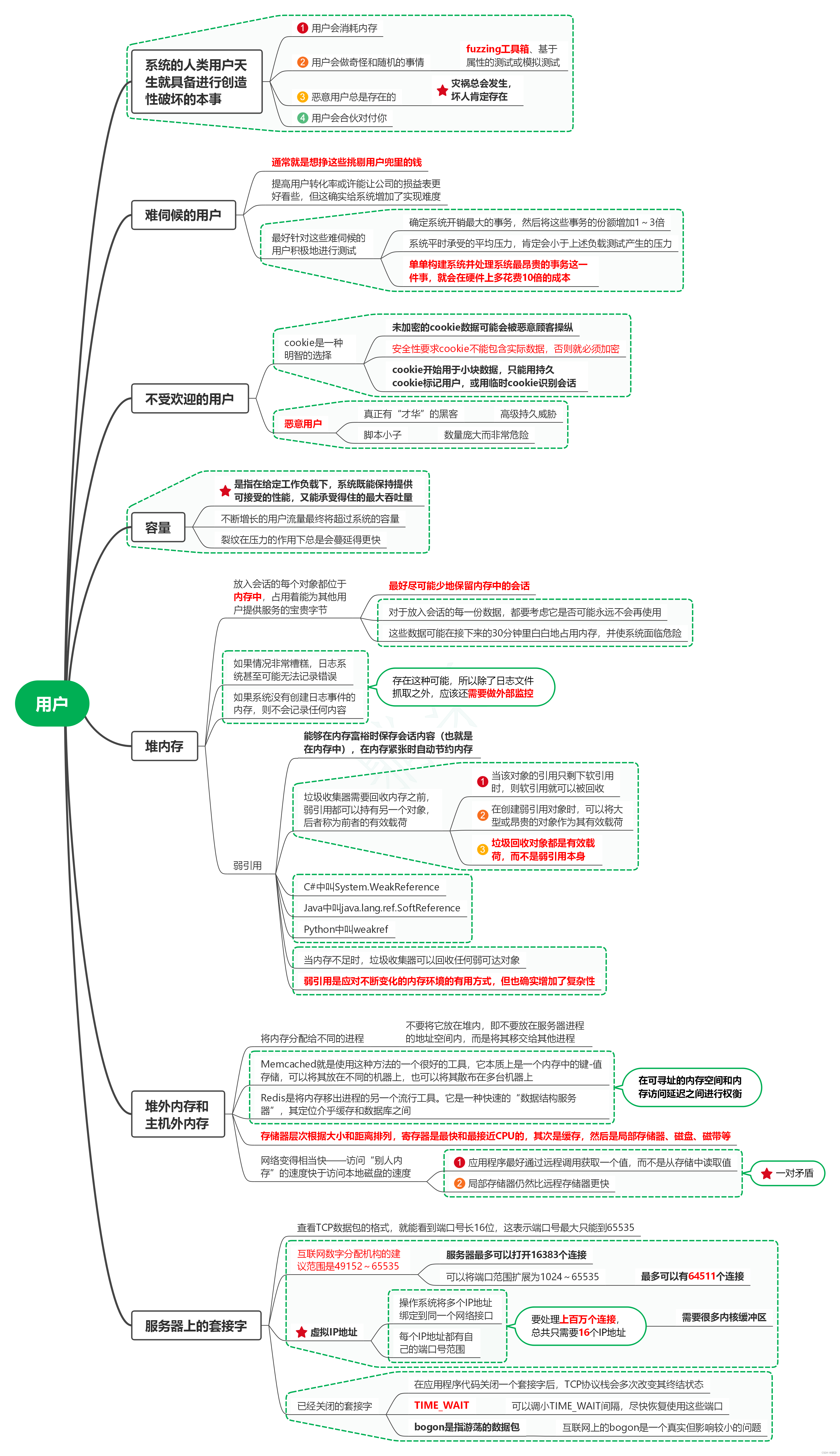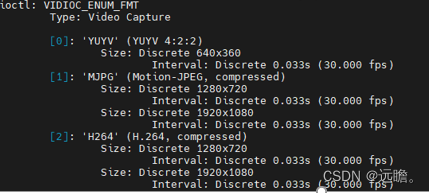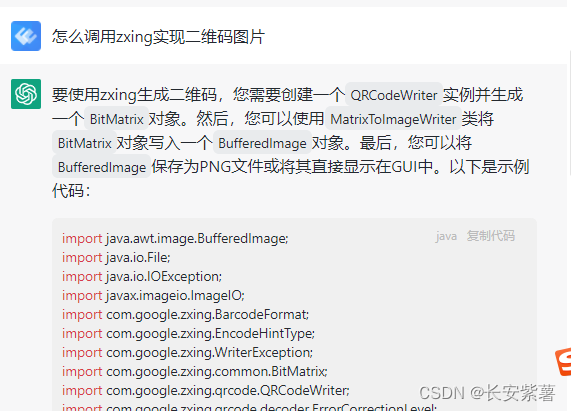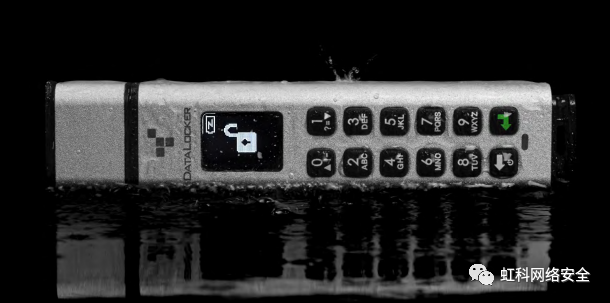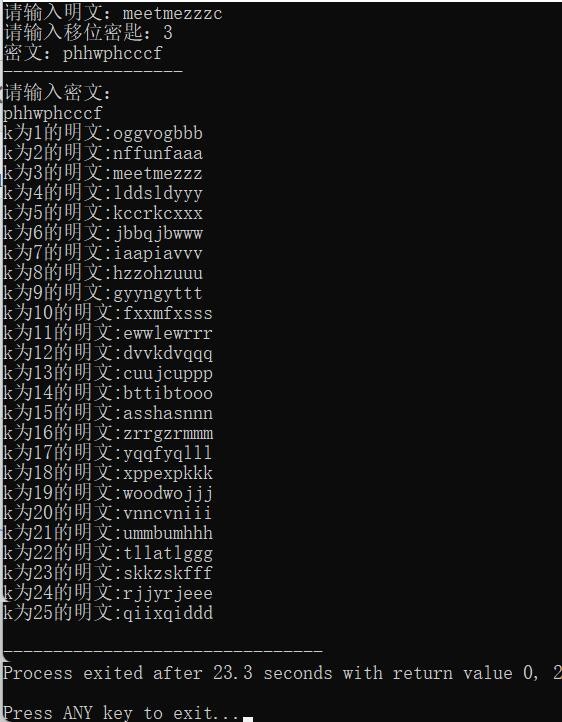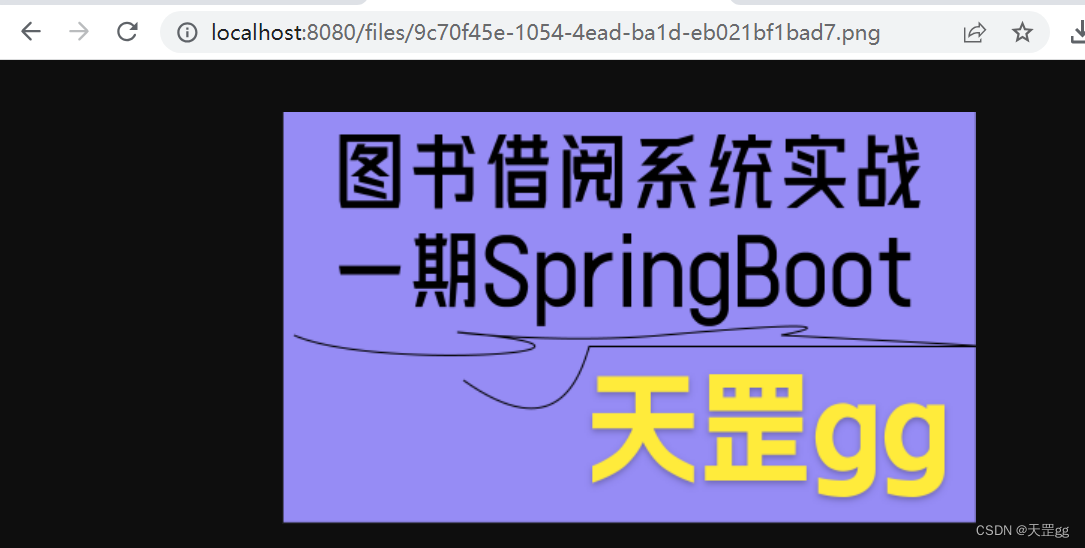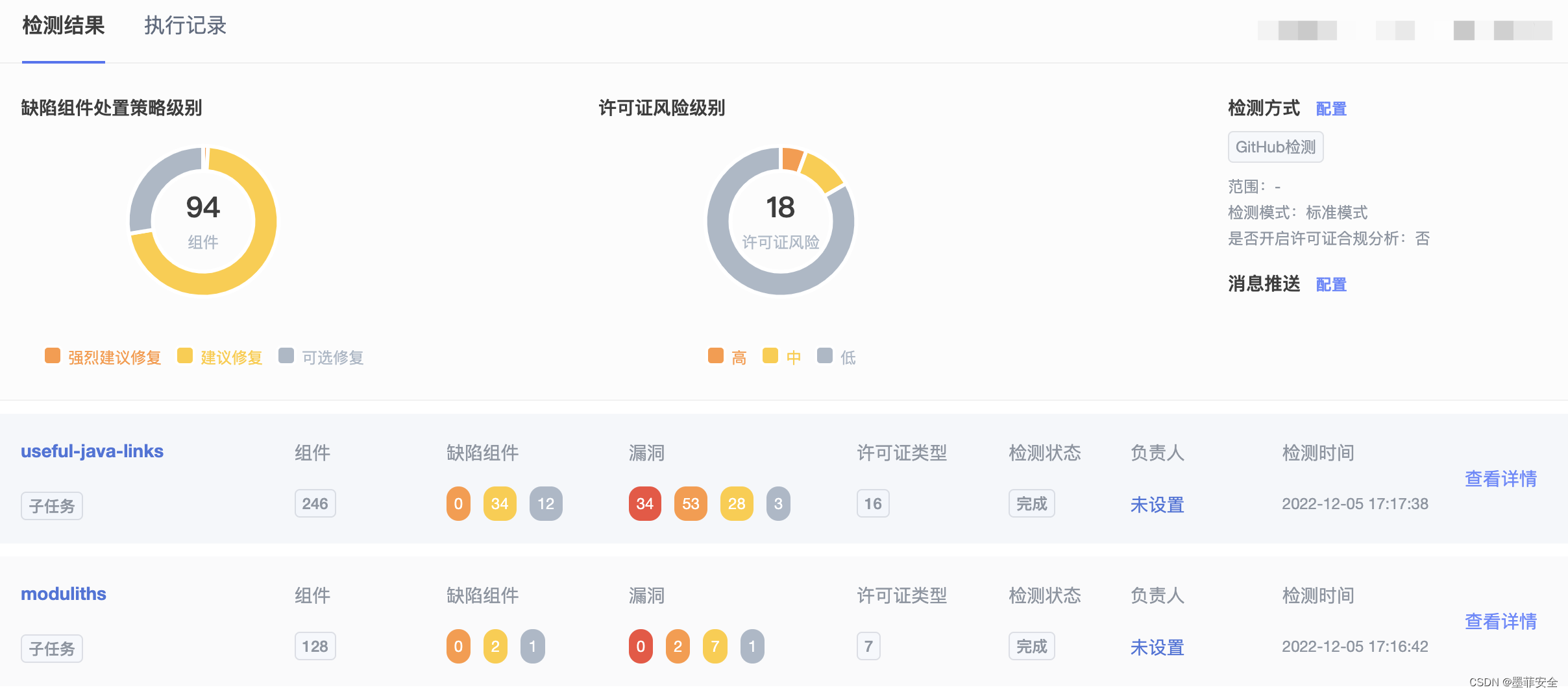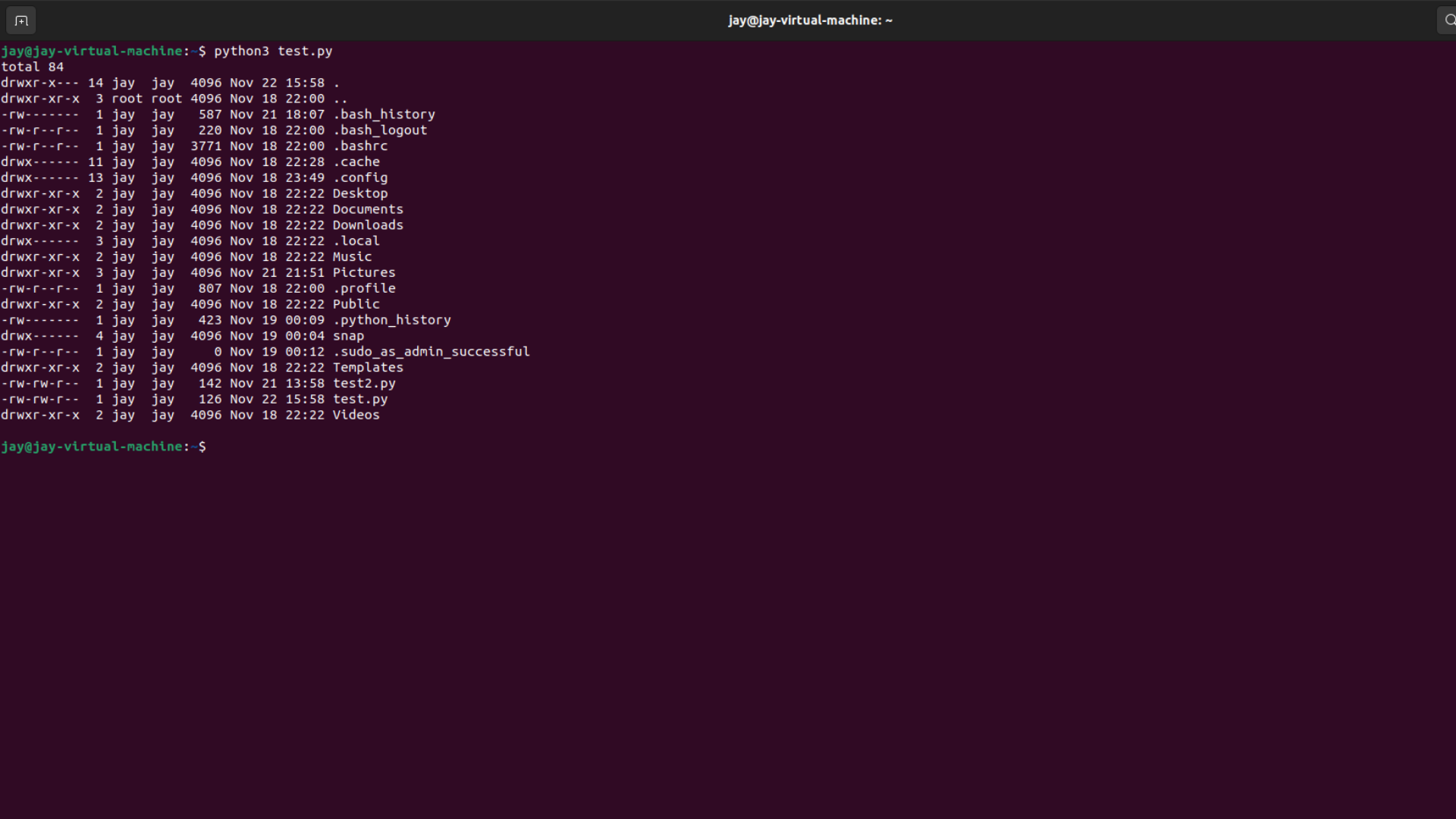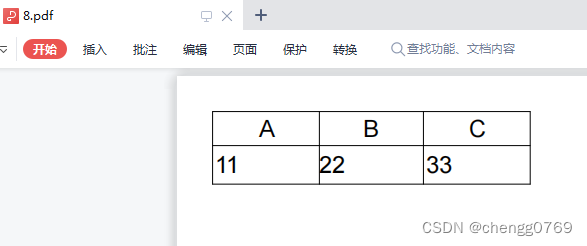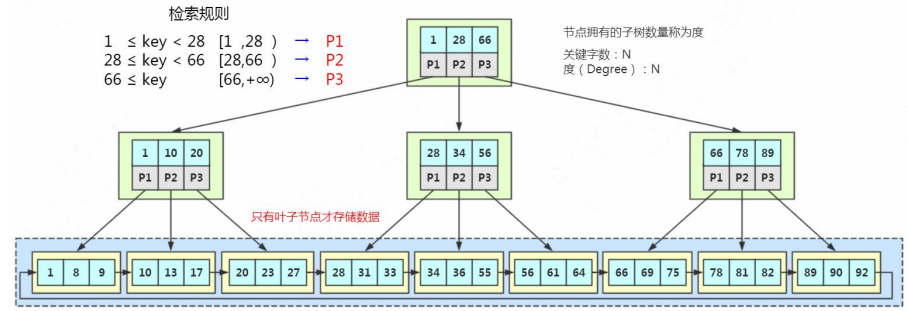介绍
ThreadPoolExecutor 是 Java 中实现线程池的一个类,它是 ExecutorService 接口的一个实现类。线程池可以用来优化线程的使用,避免频繁地创建和销毁线程,以及限制并发线程的数量,从而提高应用程序的性能。
public class ThreadPoolExecutor extends AbstractExecutorService
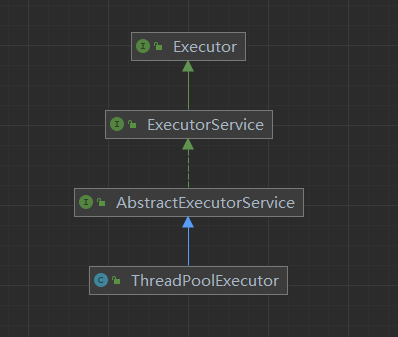
常量&变量
/**
* The main pool control state, ctl, is an atomic integer packing
* two conceptual fields
* workerCount, indicating the effective number of threads
* runState, indicating whether running, shutting down etc
*
* In order to pack them into one int, we limit workerCount to
* (2^29)-1 (about 500 million) threads rather than (2^31)-1 (2
* billion) otherwise representable. If this is ever an issue in
* the future, the variable can be changed to be an AtomicLong,
* and the shift/mask constants below adjusted. But until the need
* arises, this code is a bit faster and simpler using an int.
*
* The workerCount is the number of workers that have been
* permitted to start and not permitted to stop. The value may be
* transiently different from the actual number of live threads,
* for example when a ThreadFactory fails to create a thread when
* asked, and when exiting threads are still performing
* bookkeeping before terminating. The user-visible pool size is
* reported as the current size of the workers set.
*
* The runState provides the main lifecycle control, taking on values:
*
* RUNNING: Accept new tasks and process queued tasks
* SHUTDOWN: Don't accept new tasks, but process queued tasks
* STOP: Don't accept new tasks, don't process queued tasks,
* and interrupt in-progress tasks
* TIDYING: All tasks have terminated, workerCount is zero,
* the thread transitioning to state TIDYING
* will run the terminated() hook method
* TERMINATED: terminated() has completed
*
* The numerical order among these values matters, to allow
* ordered comparisons. The runState monotonically increases over
* time, but need not hit each state. The transitions are:
*
* RUNNING -> SHUTDOWN
* On invocation of shutdown(), perhaps implicitly in finalize()
* (RUNNING or SHUTDOWN) -> STOP
* On invocation of shutdownNow()
* SHUTDOWN -> TIDYING
* When both queue and pool are empty
* STOP -> TIDYING
* When pool is empty
* TIDYING -> TERMINATED
* When the terminated() hook method has completed
*
* Threads waiting in awaitTermination() will return when the
* state reaches TERMINATED.
*
* Detecting the transition from SHUTDOWN to TIDYING is less
* straightforward than you'd like because the queue may become
* empty after non-empty and vice versa during SHUTDOWN state, but
* we can only terminate if, after seeing that it is empty, we see
* that workerCount is 0 (which sometimes entails a recheck -- see
* below).
* 存储线程池状态和线程池大小,那么用前3位表示线程池状态,后29位表示:线程池大小,即线程池线程数
*/
private final AtomicInteger ctl = new AtomicInteger(ctlOf(RUNNING, 0));
//常量29 用于计算的位数
private static final int COUNT_BITS = Integer.SIZE - 3;
//最大支持线程数2^29-1
private static final int CAPACITY = (1 << COUNT_BITS) - 1;
// runState is stored in the high-order bits
//以下为线程池的四个状态,用32位中的前三位表示
// 111 00000 00000000 00000000 00000000 线程运行中 【running状态值为负数最小】
private static final int RUNNING = -1 << COUNT_BITS;
// 000 拒绝新的任务提交,会将队列中的任务执行完,正在执行的任务继续执行.
private static final int SHUTDOWN = 0 << COUNT_BITS;
// 001 拒绝新的任务提交,清空在队列中的任务
private static final int STOP = 1 << COUNT_BITS;
// 010 所有任务都销毁了,workCount=0的时候,线程池的装填在转换为TIDYING是,会执行钩子方法terminated()
private static final int TIDYING = 2 << COUNT_BITS;
// 011 terminated() 方法执行完成后,线程池的状态会转为TERMINATED.
private static final int TERMINATED = 3 << COUNT_BITS;
/**
* The queue used for holding tasks and handing off to worker
* threads. We do not require that workQueue.poll() returning
* null necessarily means that workQueue.isEmpty(), so rely
* solely on isEmpty to see if the queue is empty (which we must
* do for example when deciding whether to transition from
* SHUTDOWN to TIDYING). This accommodates special-purpose
* queues such as DelayQueues for which poll() is allowed to
* return null even if it may later return non-null when delays
* expire.
* 任务队列
* 保存不能马上执行的Runnable任务。
* 执行shutdownNow()时,会返回还在队列的任务
*/
private final BlockingQueue<Runnable> workQueue;
/**
* Lock held on access to workers set and related bookkeeping.
* While we could use a concurrent set of some sort, it turns out
* to be generally preferable to use a lock. Among the reasons is
* that this serializes interruptIdleWorkers, which avoids
* unnecessary interrupt storms, especially during shutdown.
* Otherwise exiting threads would concurrently interrupt those
* that have not yet interrupted. It also simplifies some of the
* associated statistics bookkeeping of largestPoolSize etc. We
* also hold mainLock on shutdown and shutdownNow, for the sake of
* ensuring workers set is stable while separately checking
* permission to interrupt and actually interrupting.
* 主锁,对workers、largestPoolSize、completedTaskCount的访问都必须先获取该锁
*/
private final ReentrantLock mainLock = new ReentrantLock();
/**
* Set containing all worker threads in pool. Accessed only when
* holding mainLock.
* 包含池中的所有工作线程的集合。持有mainLock访问
* 创建Worker时,添加到集合
* 线程结束时,从集合移除
* 调用shutdown()时,从该集合中找到空闲线程并中断
* 调用shutdownNow()时,从该集合中找到已启动的线程并中断
*/
private final HashSet<Worker> workers = new HashSet<Worker>();
/**
* Wait condition to support awaitTermination
* 线程通信手段, 用于支持awaitTermination方法:等待所有任务完成,并支持设置超时时间,返回值代表是不是超时.
*/
private final Condition termination = mainLock.newCondition();
/**
* Tracks largest attained pool size. Accessed only under
* mainLock.
* 记录workers历史以来的最大值。持有mainLock访问
* 每次增加worker的时候,都会判断当前workers.size()是否大于最大值,大于则更新
* 用于线程池监控的,作为重要指标
*/
private int largestPoolSize;
/**
* Counter for completed tasks. Updated only on termination of
* worker threads. Accessed only under mainLock.
* 计数所有已完成任务,持有mainLock访问
* 每个worker都有一个自己的成员变量 completedTasks 来记录当前 worker 执行的任务次数,
* 当前线worker工作线程终止的时候, 才会将worker中的completedTasks的数量加入到 completedTaskCount 指标中.
*/
private long completedTaskCount;
/*
* All user control parameters are declared as volatiles so that
* ongoing actions are based on freshest values, but without need
* for locking, since no internal invariants depend on them
* changing synchronously with respect to other actions.
*/
/**
* Factory for new threads. All threads are created using this
* factory (via method addWorker). All callers must be prepared
* for addWorker to fail, which may reflect a system or user's
* policy limiting the number of threads. Even though it is not
* treated as an error, failure to create threads may result in
* new tasks being rejected or existing ones remaining stuck in
* the queue.
*
* We go further and preserve pool invariants even in the face of
* errors such as OutOfMemoryError, that might be thrown while
* trying to create threads. Such errors are rather common due to
* the need to allocate a native stack in Thread.start, and users
* will want to perform clean pool shutdown to clean up. There
* will likely be enough memory available for the cleanup code to
* complete without encountering yet another OutOfMemoryError.
* 线程工厂
*/
private volatile ThreadFactory threadFactory;
/**
* Handler called when saturated or shutdown in execute.
* 拒绝策略,默认四种AbortPolicy、CallerRunsPolicy、DiscardPolicy、DiscardOldestPolicy,
* 建议自己实现,增加监控指标
*/
private volatile RejectedExecutionHandler handler;
// keepAliveTime和allowCoreThreadTimeOut 是关于线程空闲是否会被销毁的配置
/**
* Timeout in nanoseconds for idle threads waiting for work.
* Threads use this timeout when there are more than corePoolSize
* present or if allowCoreThreadTimeOut. Otherwise they wait
* forever for new work.
* 关于空闲的说明:
* 1、线程池在没有关闭之前,会一直向任务队列(workqueue)获取任务执行,如果任务队列是空的,在新任务提交上来之前,就会产生一个等待时间,期间,线程处于空闲状态
* 2、向任务队列获取任务用:workQueue.poll(keepAliveTime, TimeUnit.NANOSECONDS),表示阻塞式获取元素,等待超时,则终止等待并返回false。通过判断poll()方法是true/falle来判定线程是否超时
*
* 获取任务的等待时间 ,以下两种情况会使用到该值
* 1、如果启用allowCoreThreadTimeOut,那表示核心线程的空闲时间
* 2、当线程池内线程数超过corePoolSize,表示线程获取任务的等待时间
*/
private volatile long keepAliveTime;
/**
* If false (default), core threads stay alive even when idle.
* If true, core threads use keepAliveTime to time out waiting
* for work.
* 核心线程是否开启超时
* false:表示核心线程一旦启动,会一直运行,直至关闭线程池。默认该值
* true:表示核心线程处于空闲且时间超过keepAliveTime,核心线程结束后,将不再创建新线程
* (默认的构造函数没有设置这个属性,需要手工调用allowCoreThreadTimeOut()方法来设置)
*/
private volatile boolean allowCoreThreadTimeOut;
/**
* Core pool size is the minimum number of workers to keep alive
* (and not allow to time out etc) unless allowCoreThreadTimeOut
* is set, in which case the minimum is zero.
* 核心线程数量
* 核心线程是指:线程会一直存活在线程池中,不会被主动销毁【如果核心线程开启超时,有可能被被销毁】
*/
private volatile int corePoolSize;
/**
* Maximum pool size. Note that the actual maximum is internally
* bounded by CAPACITY.
* 配置的线程池最大线程数
*/
private volatile int maximumPoolSize;
/**
* The default rejected execution handler
* 默认拒绝策略 AbortPolicy
*/
private static final RejectedExecutionHandler defaultHandler =
new AbortPolicy();
/**
* Permission required for callers of shutdown and shutdownNow.
* We additionally require (see checkShutdownAccess) that callers
* have permission to actually interrupt threads in the worker set
* (as governed by Thread.interrupt, which relies on
* ThreadGroup.checkAccess, which in turn relies on
* SecurityManager.checkAccess). Shutdowns are attempted only if
* these checks pass.
*
* All actual invocations of Thread.interrupt (see
* interruptIdleWorkers and interruptWorkers) ignore
* SecurityExceptions, meaning that the attempted interrupts
* silently fail. In the case of shutdown, they should not fail
* unless the SecurityManager has inconsistent policies, sometimes
* allowing access to a thread and sometimes not. In such cases,
* failure to actually interrupt threads may disable or delay full
* termination. Other uses of interruptIdleWorkers are advisory,
* and failure to actually interrupt will merely delay response to
* configuration changes so is not handled exceptionally.
* 安全控制访问(主要用于shutdown和 shutdownNow方法
*/
private static final RuntimePermission shutdownPerm =
new RuntimePermission("modifyThread");
/* The context to be used when executing the finalizer, or null. */
//在threadPoolExecutor初始化的时候赋值,acc对象是指当前调用上下文的快照,
// 其中包括当前线程继承的AccessControlContext和任何有限的特权范围,
// 使得可以在稍后的某个时间点(可能在另一个线程中)检查此上下文。
private final AccessControlContext acc;
构造方法
// Public constructors and methods
/**
* Creates a new {@code ThreadPoolExecutor} with the given initial
* parameters and default thread factory and rejected execution handler.
* It may be more convenient to use one of the {@link Executors} factory
* methods instead of this general purpose constructor.
*
* @param corePoolSize the number of threads to keep in the pool, even
* if they are idle, unless {@code allowCoreThreadTimeOut} is set
* @param maximumPoolSize the maximum number of threads to allow in the
* pool
* @param keepAliveTime when the number of threads is greater than
* the core, this is the maximum time that excess idle threads
* will wait for new tasks before terminating.
* @param unit the time unit for the {@code keepAliveTime} argument
* @param workQueue the queue to use for holding tasks before they are
* executed. This queue will hold only the {@code Runnable}
* tasks submitted by the {@code execute} method.
* @throws IllegalArgumentException if one of the following holds:<br>
* {@code corePoolSize < 0}<br>
* {@code keepAliveTime < 0}<br>
* {@code maximumPoolSize <= 0}<br>
* {@code maximumPoolSize < corePoolSize}
* @throws NullPointerException if {@code workQueue} is null
*/
public ThreadPoolExecutor(int corePoolSize,
int maximumPoolSize,
long keepAliveTime,
TimeUnit unit,
BlockingQueue<Runnable> workQueue) {
this(corePoolSize, maximumPoolSize, keepAliveTime, unit, workQueue,
Executors.defaultThreadFactory(), defaultHandler);
}
/**
* Creates a new {@code ThreadPoolExecutor} with the given initial
* parameters and default rejected execution handler.
*
* @param corePoolSize the number of threads to keep in the pool, even
* if they are idle, unless {@code allowCoreThreadTimeOut} is set
* @param maximumPoolSize the maximum number of threads to allow in the
* pool
* @param keepAliveTime when the number of threads is greater than
* the core, this is the maximum time that excess idle threads
* will wait for new tasks before terminating.
* @param unit the time unit for the {@code keepAliveTime} argument
* @param workQueue the queue to use for holding tasks before they are
* executed. This queue will hold only the {@code Runnable}
* tasks submitted by the {@code execute} method.
* @param threadFactory the factory to use when the executor
* creates a new thread
* @throws IllegalArgumentException if one of the following holds:<br>
* {@code corePoolSize < 0}<br>
* {@code keepAliveTime < 0}<br>
* {@code maximumPoolSize <= 0}<br>
* {@code maximumPoolSize < corePoolSize}
* @throws NullPointerException if {@code workQueue}
* or {@code threadFactory} is null
*/
public ThreadPoolExecutor(int corePoolSize,
int maximumPoolSize,
long keepAliveTime,
TimeUnit unit,
BlockingQueue<Runnable> workQueue,
ThreadFactory threadFactory) {
this(corePoolSize, maximumPoolSize, keepAliveTime, unit, workQueue,
threadFactory, defaultHandler);
}
/**
* Creates a new {@code ThreadPoolExecutor} with the given initial
* parameters and default thread factory.
*
* @param corePoolSize the number of threads to keep in the pool, even
* if they are idle, unless {@code allowCoreThreadTimeOut} is set
* @param maximumPoolSize the maximum number of threads to allow in the
* pool
* @param keepAliveTime when the number of threads is greater than
* the core, this is the maximum time that excess idle threads
* will wait for new tasks before terminating.
* @param unit the time unit for the {@code keepAliveTime} argument
* @param workQueue the queue to use for holding tasks before they are
* executed. This queue will hold only the {@code Runnable}
* tasks submitted by the {@code execute} method.
* @param handler the handler to use when execution is blocked
* because the thread bounds and queue capacities are reached
* @throws IllegalArgumentException if one of the following holds:<br>
* {@code corePoolSize < 0}<br>
* {@code keepAliveTime < 0}<br>
* {@code maximumPoolSize <= 0}<br>
* {@code maximumPoolSize < corePoolSize}
* @throws NullPointerException if {@code workQueue}
* or {@code handler} is null
*/
public ThreadPoolExecutor(int corePoolSize,
int maximumPoolSize,
long keepAliveTime,
TimeUnit unit,
BlockingQueue<Runnable> workQueue,
RejectedExecutionHandler handler) {
this(corePoolSize, maximumPoolSize, keepAliveTime, unit, workQueue,
Executors.defaultThreadFactory(), handler);
}
/**
* Creates a new {@code ThreadPoolExecutor} with the given initial
* parameters.
*
* @param corePoolSize the number of threads to keep in the pool, even
* if they are idle, unless {@code allowCoreThreadTimeOut} is set
* @param maximumPoolSize the maximum number of threads to allow in the
* pool
* @param keepAliveTime when the number of threads is greater than
* the core, this is the maximum time that excess idle threads
* will wait for new tasks before terminating.
* @param unit the time unit for the {@code keepAliveTime} argument
* @param workQueue the queue to use for holding tasks before they are
* executed. This queue will hold only the {@code Runnable}
* tasks submitted by the {@code execute} method.
* @param threadFactory the factory to use when the executor
* creates a new thread
* @param handler the handler to use when execution is blocked
* because the thread bounds and queue capacities are reached
* @throws IllegalArgumentException if one of the following holds:<br>
* {@code corePoolSize < 0}<br>
* {@code keepAliveTime < 0}<br>
* {@code maximumPoolSize <= 0}<br>
* {@code maximumPoolSize < corePoolSize}
* @throws NullPointerException if {@code workQueue}
* or {@code threadFactory} or {@code handler} is null
*/
public ThreadPoolExecutor(int corePoolSize,
int maximumPoolSize,
long keepAliveTime,
TimeUnit unit,
BlockingQueue<Runnable> workQueue,
ThreadFactory threadFactory,
RejectedExecutionHandler handler) {
//初始值的合法性校验
if (corePoolSize < 0 ||
maximumPoolSize <= 0 ||
//最大线程数必须大于核心线程数
maximumPoolSize < corePoolSize ||
keepAliveTime < 0)
throw new IllegalArgumentException();
if (workQueue == null || threadFactory == null || handler == null)
throw new NullPointerException();
//成员变量赋初值
this.acc = System.getSecurityManager() == null ?
null :
AccessController.getContext();
this.corePoolSize = corePoolSize;
this.maximumPoolSize = maximumPoolSize;
//默认使用SynchronousQueue<Runnable>
this.workQueue = workQueue;
this.keepAliveTime = unit.toNanos(keepAliveTime);
//默认使用DefaultThreadFactory
this.threadFactory = threadFactory;
this.handler = handler;
}
-
corePoolSize:线程池中的核心线程数;
-
maximumPoolSize:线程池最大线程数,它表示在线程池中最多能创建多少个线程;
-
keepAliveTime:线程池中非核心线程闲置超时时长(准确来说应该是没有任务执行时的回收时间,后面会分析);
-
- 一个非核心线程,如果不干活(闲置状态)的时长超过这个参数所设定的时长,就会被销毁掉
- 如果设置allowCoreThreadTimeOut(boolean value),则会作用于核心线程
-
TimeUnit:时间单位。可选的单位有分钟(MINUTES),秒(SECONDS),毫秒(MILLISECONDS) 等;
-
workQueue:任务的阻塞队列,缓存将要执行的Runnable任务,由各线程轮询该任务队列获取任务执行。可以选择以下几个阻塞队列。
-
- ArrayBlockingQueue:是一个基于数组结构的有界阻塞队列,此队列按 FIFO(先进先出)原则对元素进行排序。
- LinkedBlockingQueue:一个基于链表结构的阻塞队列,此队列按FIFO (先进先出) 排序元素,吞吐量通常要高于ArrayBlockingQueue。静态工厂方法Executors.newFixedThreadPool()使用了这个队列。
- SynchronousQueue:一个不存储元素的阻塞队列。每个插入操作必须等到另一个线程调用移除操作,否则插入操作一直处于阻塞状态,吞吐量通常要高于LinkedBlockingQueue,静态工厂方法Executors.newCachedThreadPool使用了这个队列。
- PriorityBlockingQueue:一个具有优先级的无限阻塞队列。
-
ThreadFactory:线程创建的工厂。可以进行一些属性设置,比如线程名,优先级等等,有默认实现。
-
RejectedExecutionHandler:任务拒绝策略,当运行线程数已达到maximumPoolSize,队列也已经装满时会调用该参数拒绝任务,默认情况下是AbortPolicy,表示无法处理新任务时抛出异常。以下是JDK1.5提供的四种策略。
-
-
AbortPolicy:直接抛出异常。
-
CallerRunsPolicy:只用调用者所在线程来运行任务。
-
DiscardOldestPolicy:丢弃队列里最近的一个任务,并执行当前任务。
-
DiscardPolicy:不处理,丢弃掉。
当然也可以根据应用场景需要来实现
-
RejectedExecutionHandler接口自定义策略。如记录日志或持久化不能处理的任务。
内部类
Worker
Worker其实是ThreadPoolExecutor线程池中保存的工作线程,线程池主要是使用Worker来执行任务。
Worker类继承自AQS,并且实现了Runnable接口。它主要维持运行任务线程的中断控制状态,以及其他次要的信息。
它继承自AQS主要用于每次执行任务时简化锁的获取和释放。这可以防止中断用于唤醒等待任务的工作线程,而不是中断正在运行的任务。
/**
* Class Worker mainly maintains interrupt control state for
* threads running tasks, along with other minor bookkeeping.
* This class opportunistically extends AbstractQueuedSynchronizer
* to simplify acquiring and releasing a lock surrounding each
* task execution. This protects against interrupts that are
* intended to wake up a worker thread waiting for a task from
* instead interrupting a task being run. We implement a simple
* non-reentrant mutual exclusion lock rather than use
* ReentrantLock because we do not want worker tasks to be able to
* reacquire the lock when they invoke pool control methods like
* setCorePoolSize. Additionally, to suppress interrupts until
* the thread actually starts running tasks, we initialize lock
* state to a negative value, and clear it upon start (in
* runWorker).
*/
private final class Worker
extends AbstractQueuedSynchronizer
implements Runnable
{
/**
* This class will never be serialized, but we provide a
* serialVersionUID to suppress a javac warning.
*/
private static final long serialVersionUID = 6138294804551838833L;
/** Thread this worker is running in. Null if factory fails. */
//线程类型的属性:thread,线程池启动工作线程,就是启动这个thread。
// 1、通过this.thread=getThreadFactory().newThread(this),初始化了属性thread,this就是指Worker对象
//2、因为Worker类实现了Runnable接口,所以thread启动后,会运行Worker的run()方法,然后就去执行runWorker(this)方法
final Thread thread;
/** Initial task to run. Possibly null. */
//线程要执行的第1个任务(可能为 null) 它表示这个任务立即执行,不需要放到任务队列。在工作线程数<核心线程数时,这种场景会出现
Runnable firstTask;
/** Per-thread task counter */
//保存Worker线程池执行过的任务数,在runWorker()的finally中累加更新。任务执行成功与否都会更新
volatile long completedTasks;
/**
* Creates with given first task and thread from ThreadFactory.
* @param firstTask the first task (null if none)
*/
Worker(Runnable firstTask) {
// AQS父类的state。设为-1
setState(-1); // inhibit interrupts until runWorker
//firstTask赋初值
this.firstTask = firstTask;
//属性thread赋值
this.thread = getThreadFactory().newThread(this);
}
/** Delegates main run loop to outer runWorker */
public void run() {
//调用runWorkder方法:将Worker对象传递给调用者,这样就可以访问firstTask、thread等属性以及lock()相关方法
runWorker(this);
}
// Lock methods
//
// The value 0 represents the unlocked state.
// The value 1 represents the locked state.
// state 的值说明
// -1:worker初始化; 1 :锁被独占; 0:锁空闲
//是否持有锁 AQS父类方法的实现
protected boolean isHeldExclusively() {
return getState() != 0;
}
//以独占方式获取锁,将state设为1 AQS父类方法的实现
protected boolean tryAcquire(int unused) {
if (compareAndSetState(0, 1)) {
setExclusiveOwnerThread(Thread.currentThread());
return true;
}
//假如state=1,那么cas失败,返回false,线程就会进入AQS队列等待
return false;
}
//释放锁。state设为0 AQS父类方法的实现
protected boolean tryRelease(int unused) {
setExclusiveOwnerThread(null);
setState(0);
return true;
}
//提供加锁和解锁的方法
public void lock() { acquire(1); }
public boolean tryLock() { return tryAcquire(1); }
public void unlock() { release(1); }
public boolean isLocked() { return isHeldExclusively(); }
//向线程发起中断请求
// 符合:1、运行中的;2、没有处于中断 才能中断
void interruptIfStarted() {
Thread t;
if (getState() >= 0 && (t = thread) != null && !t.isInterrupted()) {
try {
t.interrupt();
} catch (SecurityException ignore) {
}
}
}
}
AbortPolicy、CallerRunsPolicy、DiscardOldestPolicy、DiscardPolicy表示任务的拒绝策略,当线程池的线程数量达到最大值并且阻塞队列已满时,根据这些不同的策略对新提交的任务进行不同的处理。它们都实现了RejectedExecutionHandler接口。
CallerRunsPolicy
直接在调用execute方法的线程中运行被拒绝的任务,除非执行器已关闭,在这种情况下,该任务被丢弃
/**
* A handler for rejected tasks that runs the rejected task
* directly in the calling thread of the {@code execute} method,
* unless the executor has been shut down, in which case the task
* is discarded.
*
*/
public static class CallerRunsPolicy implements RejectedExecutionHandler {
/**
* Creates a {@code CallerRunsPolicy}.
*/
public CallerRunsPolicy() { }
/**
* Executes task r in the caller's thread, unless the executor
* has been shut down, in which case the task is discarded.
*
* @param r the runnable task requested to be executed
* @param e the executor attempting to execute this task
* 在调用线程中执行任务,除非执行器已经被关闭,此时这个任务将被丢弃
*/
public void rejectedExecution(Runnable r, ThreadPoolExecutor e) {
//如果线程池没有关闭,直接在该线程中运行此方法
if (!e.isShutdown()) {
r.run();
}
}
}
AbortPolicy
当线程和阻塞队列均到达最大容量时,直接拒绝执行任务,并抛出RejectedExecutionException异常
/**
* A handler for rejected tasks that throws a
* {@code RejectedExecutionException}.
* 直接抛出RejectedExecutionException异常
*/
public static class AbortPolicy implements RejectedExecutionHandler {
/**
* Creates an {@code AbortPolicy}.
*/
public AbortPolicy() { }
/**
* Always throws RejectedExecutionException.
*
* @param r the runnable task requested to be executed
* @param e the executor attempting to execute this task
* @throws RejectedExecutionException always
*/
public void rejectedExecution(Runnable r, ThreadPoolExecutor e) {
throw new RejectedExecutionException("Task " + r.toString() +
" rejected from " +
e.toString());
}
}
DiscardPolicy
不做任何事情,相当于直接丢弃任务。
/**
* A handler for rejected tasks that silently discards the
* rejected task.
*/
public static class DiscardPolicy implements RejectedExecutionHandler {
/**
* Creates a {@code DiscardPolicy}.
*/
public DiscardPolicy() { }
/**
* Does nothing, which has the effect of discarding task r.
*
* @param r the runnable task requested to be executed
* @param e the executor attempting to execute this task
* 不做任何事情,相当于直接丢弃任务
*/
public void rejectedExecution(Runnable r, ThreadPoolExecutor e) {
}
}
DiscardOldestPolicy
丢弃最老的任务,并运行最新提交的任务。
/**
* Obtains and ignores the next task that the executor
* would otherwise execute, if one is immediately available,
* and then retries execution of task r, unless the executor
* is shut down, in which case task r is instead discarded.
*
* @param r the runnable task requested to be executed
* @param e the executor attempting to execute this task
* 获取并且忽略线程池下一个要执行的任务
* 线程池可用的话,就调用execute执行新的任务
* 线程池关闭的话,新的任务将被丢弃
*/
public void rejectedExecution(Runnable r, ThreadPoolExecutor e) {
if (!e.isShutdown()) {
//队列中位于头部的任务出栈
e.getQueue().poll();
//执行新的任务
e.execute(r);
}
}
线程池流程图:

常用方法
execute
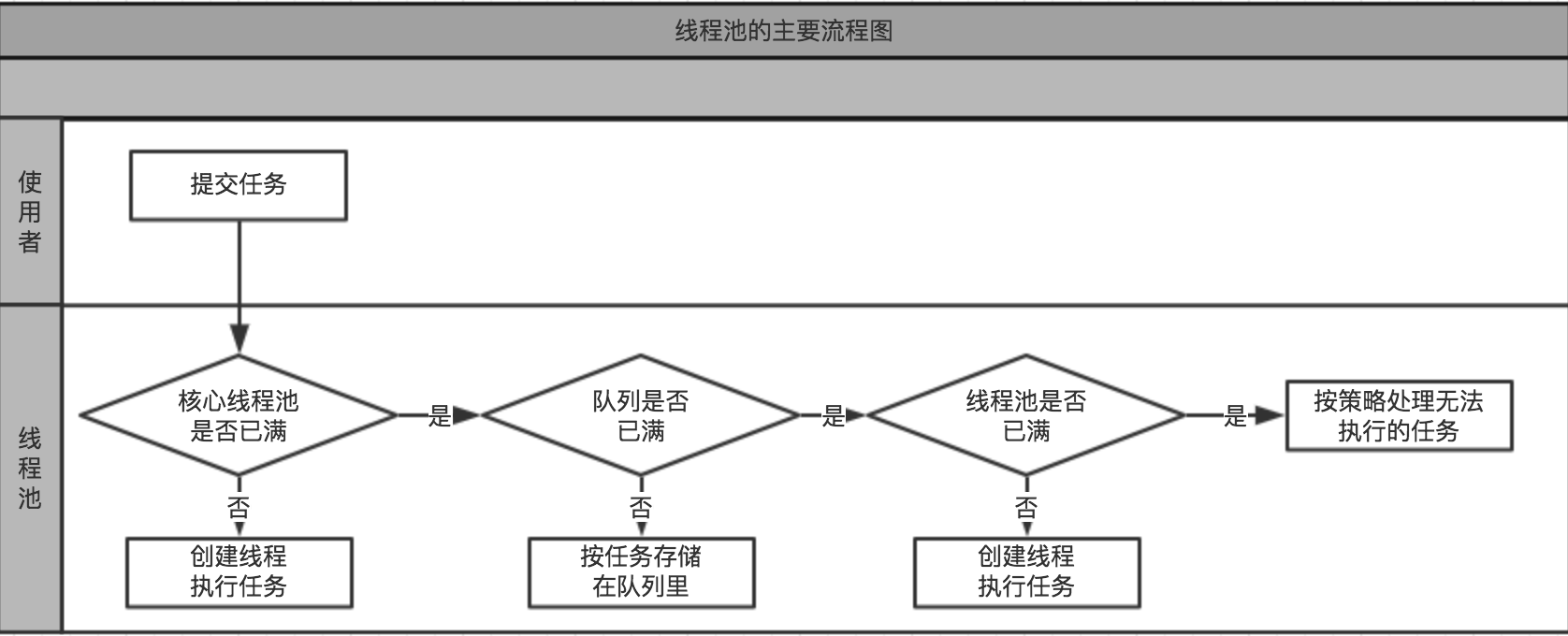
/**
* Executes the given task sometime in the future. The task
* may execute in a new thread or in an existing pooled thread.
*
* If the task cannot be submitted for execution, either because this
* executor has been shutdown or because its capacity has been reached,
* the task is handled by the current {@code RejectedExecutionHandler}.
*
* @param command the task to execute
* @throws RejectedExecutionException at discretion of
* {@code RejectedExecutionHandler}, if the task
* cannot be accepted for execution
* @throws NullPointerException if {@code command} is null
*/
public void execute(Runnable command) {
if (command == null)
throw new NullPointerException();
/*
* Proceed in 3 steps:
*
* 1. If fewer than corePoolSize threads are running, try to
* start a new thread with the given command as its first
* task. The call to addWorker atomically checks runState and
* workerCount, and so prevents false alarms that would add
* threads when it shouldn't, by returning false.
*
* 2. If a task can be successfully queued, then we still need
* to double-check whether we should have added a thread
* (because existing ones died since last checking) or that
* the pool shut down since entry into this method. So we
* recheck state and if necessary roll back the enqueuing if
* stopped, or start a new thread if there are none.
*
* 3. If we cannot queue task, then we try to add a new
* thread. If it fails, we know we are shut down or saturated
* and so reject the task.
*/
//计算当前线程池的状态及线程数
int c = ctl.get();
// 1、线程池线程数小于配置的核心线程数
if (workerCountOf(c) < corePoolSize) {
// 将任务提交给核心线程执行
if (addWorker(command, true))
return;
//失败的情况:1、线程池已经被关闭、2、线程池线程数大于等于核心线程数 (不能以true的方式提交了 )
// 重新获取线程池状态
c = ctl.get();
}
// 2、无空闲核心线程或者开启核心线程失败,尝试将任务加入队列
// 再次确认线程池为RUNNING状态,将任务加入队列【非阻塞式,队列满了会立即返回false】
if (isRunning(c) && workQueue.offer(command)) {
//任务加入队列成功
//再次获取当前线程池状态(线程池可能被其它线程关闭了)
int recheck = ctl.get();
//判断当前线程池状态是不是RUNNING状态,不是就从workQueue中删除command任务
if (! isRunning(recheck) && remove(command))
reject(command);
//如果当前线程数是0(那证明还没有其他工作线程去处理这个任务),那么刚刚的任务肯定在阻塞队列里面了
else if (workerCountOf(recheck) == 0)
//开启一个没有任务的Worker线程去执行队列的任务
addWorker(null, false);
}
// 3 workQueue添加worker失败,即队列满了导致添加任务失败
//创建新的非核心线程并执行任务
//如果线程创建失败,说明要么是线程池当前状态!=RUNNING,或者是任务队列已满且线程总数达到最大线程数了
else if (!addWorker(command, false))
//执行拒绝策略.
reject(command);
}
execute()总结
进行三次addWorker的尝试:
- addWorker(command, true):创建任务并以核心线程执行
- 核心线程数达到上限, 创建任务添加到任务队列,不创建线程
- addWorker(null, false) :任务添加到队列后,接着线程池被关闭,并且从队列移除该任务失败,并且线程池线程数为0,这时创建任务并以非核心线程执行
addWorker(command, false) :任务队列已满,创建非核心线程并执行
任务提交失败情况:线程池非RUNNING状态 并且 任务队列已满并且线程池线程数达到最大线程数(maximumPoolSize)
FixedThreadPool,因为它配置的corePoolSize与maximumPoolSize相等,所以不会执行到情况3,并且因为workQueue为默认的LinkedBlockingQueue,其长度为Integer.MAX_VALUE,几乎不可能出现任务无法被添加到workQueue的情况,所以FixedThreadPool的所有任务执行在核心线程中。
而CachedThreadPool的corePoolSize为0,表示它不会执行到情况1,因为它的maximumPoolSize为Integer.MAX_VALUE,所以几乎没有线程数量上限,因为它的workQueue为SynchronousQueue,所以当线程池里没有闲置的线程SynchronousQueue就会添加任务失败,因此会执行到情况3添加新的线程执行任务。
addWorker
/**
* Checks if a new worker can be added with respect to current
* pool state and the given bound (either core or maximum). If so,
* the worker count is adjusted accordingly, and, if possible, a
* new worker is created and started, running firstTask as its
* first task. This method returns false if the pool is stopped or
* eligible to shut down. It also returns false if the thread
* factory fails to create a thread when asked. If the thread
* creation fails, either due to the thread factory returning
* null, or due to an exception (typically OutOfMemoryError in
* Thread.start()), we roll back cleanly.
*
* @param firstTask the task the new thread should run first (or
* null if none). Workers are created with an initial first task
* (in method execute()) to bypass queuing when there are fewer
* than corePoolSize threads (in which case we always start one),
* or when the queue is full (in which case we must bypass queue).
* Initially idle threads are usually created via
* prestartCoreThread or to replace other dying workers.
* 指定新增线程执行的第一个任务或者不执行任务
*
* @param core if true use corePoolSize as bound, else
* maximumPoolSize. (A boolean indicator is used here rather than a
* value to ensure reads of fresh values after checking other pool
* state).
* @return true if successful
* 创建新的线程执行当前任务
*/
private boolean addWorker(Runnable firstTask, boolean core) {
//外循环:
retry:
for (;;) {
int c = ctl.get();
int rs = runStateOf(c);
// Check if queue empty only if necessary.
// 如果线程池状态是SHUTDOWN、STOP、TIDYING、TERMINATED就不允许提交。
// && 后面的特殊情况,线程池的状态是SHUTDOWN并且要要执行的任务为Null并且队列不是空,
// 这种情况下是允许增加一个线程来帮助队列中的任务跑完的,因为shutdown状态下,允许执行完成阻塞队里中的任务
if (rs >= SHUTDOWN &&
! (rs == SHUTDOWN &&
//execute()有addWorkder(null,false)的场景
firstTask == null &&
! workQueue.isEmpty()))
return false;
//内循环:cas修改工作线程数,同时判断能否添加work
for (;;) {
int wc = workerCountOf(c);
//添加任务前,线程池线程数已达到上限,此时不允许添加。上限分这三种情况:
// 1、最大支持线程数
// 2、以core=true提交时,配置的核心线程数。(返回false后,会以core=false再提交一次)
// 3、以core=false提交时,配置的线程池可容纳最大线程数。
if (wc >= CAPACITY ||
//使用core则上限为核心线程数,否则最大线程数
wc >= (core ? corePoolSize : maximumPoolSize))
return false;
//没超过上限,通过CAS的方式增加worker的数量(+1),增加成功就跳出外层循环
if (compareAndIncrementWorkerCount(c))
break retry;
//获取最新的线程池状态,与刚开始的状态比较
c = ctl.get(); // Re-read ctl
// - 变了,就从外层循环重新执行,重新进行状态的检查。
// - 没变,从当前循环重新执行,重新执行CAS操作。
if (runStateOf(c) != rs)
continue retry;
// else CAS failed due to workerCount change; retry inner loop
}
}
boolean workerStarted = false;
boolean workerAdded = false;
Worker w = null;
try {
//创建Worker,并给firstTask赋初值
w = new Worker(firstTask);
//拿到属性thread
final Thread t = w.thread;
if (t != null) {
final ReentrantLock mainLock = this.mainLock;
//此处加锁:因为涉及属性:workers、largestPoolSize(可能) 更新
mainLock.lock();
try {
// Recheck while holding lock.
// Back out on ThreadFactory failure or if
// shut down before lock acquired.
//获取线程池最新状态
int rs = runStateOf(ctl.get());
//如果当前状态是<SHUTDOWN也就是RUNNING状态
if (rs < SHUTDOWN ||
//或者状态是SHUTDOWN并且当前任务是空的(比如前面说的场景:阻塞队里里面还有,但当前已经是不允许提交的状态了)
// 检查Worker线程已经开始跑了。(thread.start()变为alive)
(rs == SHUTDOWN && firstTask == null)) {
if (t.isAlive()) // precheck that t is startable
throw new IllegalThreadStateException();
//增加worker
workers.add(w);
//获取最新worker的总数,比较并更新largestPoolSize
int s = workers.size();
if (s > largestPoolSize)
largestPoolSize = s;
//表示添加worker成功
workerAdded = true;
}
} finally {
mainLock.unlock();
}
if (workerAdded) {
//启动worker线程。该线程会一直循环执行getTask(),直至返回null,线程才结束
//执行runWorker()
t.start();
//表示线程已经跑起来了
workerStarted = true;
}
}
} finally {
if (! workerStarted)
//worker线程没成功启动,进入失败处理逻辑
addWorkerFailed(w);
}
//返回当前worker是否启动成功。
return workerStarted;
}
addWorker()总结:
- 检查线程池状态以确定能否提交任务
- 校验能否以核心线程的方式提交任务
- 线程池的状态是SHUTDOWN并且任务队列不是空,允许增加一个线程来帮助队列中的任务跑完,但不会提交任务
- 更新线程池线程数
- 超过线程池线程数峰值则更新峰值(largestPoolSize)
- 加锁(mainLock)来更新
- 启动worker线程
runWorker
/**
* Main worker run loop. Repeatedly gets tasks from queue and
* executes them, while coping with a number of issues:
*
* 1. We may start out with an initial task, in which case we
* don't need to get the first one. Otherwise, as long as pool is
* running, we get tasks from getTask. If it returns null then the
* worker exits due to changed pool state or configuration
* parameters. Other exits result from exception throws in
* external code, in which case completedAbruptly holds, which
* usually leads processWorkerExit to replace this thread.
*
* 2. Before running any task, the lock is acquired to prevent
* other pool interrupts while the task is executing, and then we
* ensure that unless pool is stopping, this thread does not have
* its interrupt set.
*
* 3. Each task run is preceded by a call to beforeExecute, which
* might throw an exception, in which case we cause thread to die
* (breaking loop with completedAbruptly true) without processing
* the task.
*
* 4. Assuming beforeExecute completes normally, we run the task,
* gathering any of its thrown exceptions to send to afterExecute.
* We separately handle RuntimeException, Error (both of which the
* specs guarantee that we trap) and arbitrary Throwables.
* Because we cannot rethrow Throwables within Runnable.run, we
* wrap them within Errors on the way out (to the thread's
* UncaughtExceptionHandler). Any thrown exception also
* conservatively causes thread to die.
*
* 5. After task.run completes, we call afterExecute, which may
* also throw an exception, which will also cause thread to
* die. According to JLS Sec 14.20, this exception is the one that
* will be in effect even if task.run throws.
*
* The net effect of the exception mechanics is that afterExecute
* and the thread's UncaughtExceptionHandler have as accurate
* information as we can provide about any problems encountered by
* user code.
*
* @param w the worker
* 执行任务
*/
final void runWorker(Worker w) {
//runWorker()是由Worker.run()调用,因此wt就是worker线程
Thread wt = Thread.currentThread();
//拿到firstTask并赋值给局部变量task
Runnable task = w.firstTask;
//firstTask置空
w.firstTask = null;
//将state设置为0。因为构造函数设成-1,在执行任务前置为0。
w.unlock(); // allow interrupts
//标识任务是不是立刻就完成了。
boolean completedAbruptly = true;
try {
//循环:先执行firstTask(不为空),后续通过getTask()获取任务。
while (task != null || (task = getTask()) != null) {
//任务执行前加锁,任务完成后解锁。
//任何地方可通过判断锁状态来确认worker是否执行中
//加锁。防止任务在执行过程中被中断。
w.lock();
// If pool is stopping, ensure thread is interrupted;
// if not, ensure thread is not interrupted. This
// requires a recheck in second case to deal with
// shutdownNow race while clearing interrupt
//判断目的:确保线程池当状态值大于等于 STOP 时有向线程发起过中断请求【调用了shutdownNow()】
// 两种情况:
//1)如果当前线程池的状态是>=Stop的,并且当前线程没有被中断,那么就要执行中断。
//2)或者当前线程目前是已中断的状态并且线程池的状态也是>=Stop的(注意Thread.interrupted是会擦除中断标识符的),
// 那么因为中断标识符已经被擦除了,那么!wt.isInterrupted()一定返回true,这个时候还是要将当前线程中断。
// 第二次执行runStateAtLeast(ctl.get(), STOP)相当于一个二次检查
if ((runStateAtLeast(ctl.get(), STOP) ||
(Thread.interrupted() &&
runStateAtLeast(ctl.get(), STOP))) &&
!wt.isInterrupted())
//中断worker线程 。因为线程池将要终止了,所以这里没有从workerSet移除当前线程
wt.interrupt();
try {
//前置操作,空方法,可以业务自己实现
beforeExecute(wt, task);
Throwable thrown = null;
try {
//执行任务:就是执行通过execute()提交的Runnable
//第一个是firstTask,后面的是通过getTask()拿到的任务
task.run();
} catch (RuntimeException x) {
thrown = x; throw x;
} catch (Error x) {
thrown = x; throw x;
} catch (Throwable x) {
thrown = x; throw new Error(x);
} finally {
//后置操作,空方法,可以业务自己实现
afterExecute(task, thrown);
}
} finally {
//最后将task置为null,触发while循环的条件getTask()
task = null;
//已完成的任务计数器+1
w.completedTasks++;
//释放当前线程的独占锁
w.unlock();
}
}
//当第一个try的代码块有异常, completedAbruptly = false 不生效。
// 最后completedAbruptly为true表示发生未知异常了
completedAbruptly = false;
} finally {
//getTask返回null时,执行任务退出
//completedAbruptly=true表示是突然退出的
processWorkerExit(w, completedAbruptly);
}
}
runWorker()总结:
执行任务前先判断线程池是否是STOPING状态,是则中断worker线程。
执行任务:先执行firstTask,再从任务队列获取执行
如果没有任务,调用processWorkerExit()来执行线程退出的工作。
只要还有任务,worker线程就一直执行任务,并刷新completedTasks
getTask
/**
* Performs blocking or timed wait for a task, depending on
* current configuration settings, or returns null if this worker
* must exit because of any of:
* 1. There are more than maximumPoolSize workers (due to
* a call to setMaximumPoolSize).
* 2. The pool is stopped.
* 3. The pool is shutdown and the queue is empty.
* 4. This worker timed out waiting for a task, and timed-out
* workers are subject to termination (that is,
* {@code allowCoreThreadTimeOut || workerCount > corePoolSize})
* both before and after the timed wait, and if the queue is
* non-empty, this worker is not the last thread in the pool.
*
* @return task, or null if the worker must exit, in which case
* workerCount is decremented
*/
private Runnable getTask() {
boolean timedOut = false; // Did the last poll() time out?
for (;;) {
int c = ctl.get();
int rs = runStateOf(c);
//1、先判断能否获取到任务
// 1)如果线程池的状态是>=STOP状态,这个时候不再处理队列中的任务,并且减少worker记录数量,
// 返回的任务为null,这个时候在runRWorker方法中会执行processWorkerExit进行worker的退出操作.
// 2)如果线程池的状态是>=SHUTDOWN并且workQueue为空,就说明处于SHOTdown以上的状态下,
// 且没有任务在等待,那么也属于获取不到任务,getTask返回null.
// Check if queue empty only if necessary.
if (rs >= SHUTDOWN && (rs >= STOP || workQueue.isEmpty())) {
//扣减线程池线程数,在processWorkerExit()处理线程退出
decrementWorkerCount();
return null;
}
//获取当前wokrer的数量
int wc = workerCountOf(c);
// Are workers subject to culling?
//以下涉及空闲线程是否会被线程池销毁的处理逻辑
// 线程超时处理前置条件:开启核心线程超时 或 线程池线程数大于核心线程数
boolean timed = allowCoreThreadTimeOut || wc > corePoolSize;
//线程超时处理的进一步判断:
// 线程池线程数超过maximumPoolSize 或者 线程设置允许超时且当前worker取任务超时
//并且
// 线程池大小不是零或阻塞队列是空的),这种就返回null,并减少线程池线程计数
// 1、 (wc>maximumPoolSize) && (wc>1) 一般情况,线程池线程数会少于配置的最大线程数,
// 但在addWork中 状态=shutdown且队列不为空时,会创建一个Worker,此时可能导致wc>maximumPoolSize,这里同时限定wc>1。因此线程池减少1个线程也不影响任务的执行【processWorkerExit()会保证还有任务就至少留有1个worker线程】。
// 2、 (wc>maximumPoolSize) && (workQueue.isEmpty()) 没有任务了,扣减更不影响
// 3 、(timed && timedOut) && (wc > 1) 超时了,先扣减再说
// 4 、(timed && timedOut) && (workQueue.isEmpty()) 超时了&队列没有任务,必须要扣减
if ((wc > maximumPoolSize || (timed && timedOut))
&& (wc > 1 || workQueue.isEmpty())) {
//这里为啥不用decrementWorkerCount()呢,上面使用decrementWorkerCount()是因为确定不管是什么情况下,数量都要减,多减一次也没事,因为这个时候就是要关闭线程池释放资源
//这里不一样,线程池的状态可能是RUNNING状态,多减一次,可能导致获取不到worker去跑
if (compareAndDecrementWorkerCount(c))
//扣减线程池线程数,在processWorkerExit()处理线程退出
return null;
//扣减失败, 跳出本次循环重新检查
continue;
}
//从队列中获取任务
//符合【线程超时处理前置条件】时用poll设置超时时间,不符合就使用take(阻塞直至有返回)
try {
Runnable r = timed ?
workQueue.poll(keepAliveTime, TimeUnit.NANOSECONDS) :
workQueue.take();
if (r != null)
//task不为空,此处返回task
return r;
timedOut = true;
// 此处,r == null,肯定是poll操作超时了(注意,不代表队列空了),继续for循环,
// 回到if ((wc > maximumPoolSize || (timed && timedOut)) 这个地方退出循环
} catch (InterruptedException retry) {
timedOut = false;
}
}
}
/**
* Decrements the workerCount field of ctl. This is called only on
* abrupt termination of a thread (see processWorkerExit). Other
* decrements are performed within getTask.
*/
private void decrementWorkerCount() {
do {} while (! compareAndDecrementWorkerCount(ctl.get()));
}
getTask()总结:
从workQueue中获取一个任务并返回
没有获取到任务就扣减线程池线程数。获取不到任务的四种情况:
线程池的状态是>=STOP
线程池的状态是SHUTDOWN并且任务队列为空
获取任务超时
线程池线程数大于maximumPoolSize并且队列为空
processWorkerExit
/**
* Performs cleanup and bookkeeping for a dying worker. Called
* only from worker threads. Unless completedAbruptly is set,
* assumes that workerCount has already been adjusted to account
* for exit. This method removes thread from worker set, and
* possibly terminates the pool or replaces the worker if either
* it exited due to user task exception or if fewer than
* corePoolSize workers are running or queue is non-empty but
* there are no workers.
*
* @param w the worker
* @param completedAbruptly if the worker died due to user exception
* worker线程没有拿到任务,成为空闲线程。该方法对空闲线程进一步处理
*/
private void processWorkerExit(Worker w, boolean completedAbruptly) {
//如果completedAbruptly为true,则说明线程执行时出现异常,需要将workerCount数量减一
//如果completedAbruptly为false,说明在getTask方法中已经对workerCount进行减一,这里不用再减
if (completedAbruptly) // If abrupt, then workerCount wasn't adjusted
decrementWorkerCount();
final ReentrantLock mainLock = this.mainLock;
mainLock.lock();
try {
//更新已完成任务的数量的统计项
completedTaskCount += w.completedTasks;
//从worker集合中移除该worker
workers.remove(w);
} finally {
mainLock.unlock();
}
//尝试关闭线程池,但如果是正常运行状态,就不会关闭
tryTerminate();
int c = ctl.get();
//1、线程池是SHUTDOWN或RUNNING(如果不是这两个状态,说明线程已经停止了,不做任何操作)
if (runStateLessThan(c, STOP)) {
//2、线程正常结束
if (!completedAbruptly) {
// 如果没有开启核心线程超时配置,则至少保留corePoolSize个线程;
int min = allowCoreThreadTimeOut ? 0 : corePoolSize;
//如果允许核心线程超时并且当前队列里面还有任务没跑,必须留1个线程,不能全死掉.
if (min == 0 && ! workQueue.isEmpty())
min = 1;
// 如果线程池数量>=最少预留线程数
if (workerCountOf(c) >= min)
// 线程自然结束了,不用补充worker
return; // replacement not needed
}
// 1、执行任务异常结束的,补充worker
// 2、如果线程池数量<最少预留线程数,补充worker
//异常结束 增加worker
addWorker(null, false);
//注: 别问我为啥上面要删除worker,还要再加,不删是不是不用加了.
// 明确下那个任务已经退出getTask那块的死循环了,永远回不去了,只能新增worker.
}
}
processWorkerExit()方法总结:
当Worker线程结束前,完成以下工作:扣减线程池线程数(ctl)、更新已完成任务数(completedTaskCount)、Worker集合中移除一个Worker(workers)、尝试终止线程池、计算线程池的最少保留线程数、根据最少保留线程数来确定是否补充一个Worker。
关于最少保留线程数:如果没有开启核心线程超时配置,则至少保留corePoolSize个线程;如果开启核心线程超时并且当前队列里面还有任务,只需保留1个线程;
需要补充worker的两种情况:1、线程池线程数<最少保留线程数 2、任务执行异常结束
tryTerminate
/**
* Transitions to TERMINATED state if either (SHUTDOWN and pool
* and queue empty) or (STOP and pool empty). If otherwise
* eligible to terminate but workerCount is nonzero, interrupts an
* idle worker to ensure that shutdown signals propagate. This
* method must be called following any action that might make
* termination possible -- reducing worker count or removing tasks
* from the queue during shutdown. The method is non-private to
* allow access from ScheduledThreadPoolExecutor.
* 尝试终止线程池
*/
final void tryTerminate() {
//cas自旋 确保更新成功
for (;;) {
int c = ctl.get();
//RUNNING状态,不能终止线程池
//线程池状态是TIDYING或TERMINATED说明线程池已经处于正在终止的路上,不用再终止了.
//状态为SHUTDOWN,但是任务队列不为空,也不能终止线程池
if (isRunning(c) ||
runStateAtLeast(c, TIDYING) ||
(runStateOf(c) == SHUTDOWN && ! workQueue.isEmpty()))
return;
//调用shutdown()或者shutdownNow()方法时,执行以下处理
//工作线程数量不等于0,中断一个空闲的工作线程并返回
//这个时候线程池一定是 1、STOP的状态或者 2、SHUTDOW且队列为空 这两种情况中断一个空闲worker
if (workerCountOf(c) != 0) { // Eligible to terminate
interruptIdleWorkers(ONLY_ONE);
return;
}
final ReentrantLock mainLock = this.mainLock;
mainLock.lock();
try {
// 设置线程池状态为TIDYING,如果设置成功,则调用terminated()
if (ctl.compareAndSet(c, ctlOf(TIDYING, 0))) {
try {
//钩子方法,子类实现。默认什么都不做
terminated();
} finally {
// 设置状态为TERMINATED
ctl.set(ctlOf(TERMINATED, 0));
//唤醒阻塞等待的线程 (future的场景)
termination.signalAll();
}
return;
}
} finally {
mainLock.unlock();
}
// else retry on failed CAS
}
}
tryTerminate()总结
-
尝试终止线程池
-
不能终止线程池:
-
- 状态是RUNNING,不能直接终止(如果是调用shutdown(),shutdownNow(),会先将状态改为SHUTDOWN)
- 状态是TIDYING或者TERMINATED,不能终止(因为已经处于终止过程中)
- 状态是SHUTDOWN并且任务队列不为空,不能终止(因为还有任务要处理)
-
可以终止线程池:
-
- 状态是SHUTDOWN并且任务队列为空
- 状态是STOP
-
符合可以终止线程池的条件下,如果线程池线程数不等于0,那就中断1个Worker线程,不修改线程池状态
-
符合可以终止线程池的条件下,并且线程池线程数等于0,那就将线程池状态改为TIDYING,执行完钩子方法terminated()后状态再改为TERMINATED
interruptIdleWorkers(ONLY_ONE); 是否好奇为啥这里只中断一个worker呢, 这里就涉及到了线程池的优雅退出了.
当执行到 interruptIdleWorkers(ONLY_ONE) 前面的时候, 线程池只能处于两种状态:
- STOP 状态 , 这个时候 workQueue 可能是有值的 , workQueue 在清空的过程中了.
- SHUTDOWN 状态并且 workQueue 是空的 .
这两种状态都是说明, 线程池即将关闭, 或者说空闲的线程此时已经没用了,这个时候随手关一个, 反正要关,早关晚关而已
interruptIdleWorker
/**
* Interrupts threads that might be waiting for tasks (as
* indicated by not being locked) so they can check for
* termination or configuration changes. Ignores
* SecurityExceptions (in which case some threads may remain
* uninterrupted).
*
* @param onlyOne If true, interrupt at most one worker. This is
* called only from tryTerminate when termination is otherwise
* enabled but there are still other workers. In this case, at
* most one waiting worker is interrupted to propagate shutdown
* signals in case all threads are currently waiting.
* Interrupting any arbitrary thread ensures that newly arriving
* workers since shutdown began will also eventually exit.
* To guarantee eventual termination, it suffices to always
* interrupt only one idle worker, but shutdown() interrupts all
* idle workers so that redundant workers exit promptly, not
* waiting for a straggler task to finish.
* 中断一个或多个线程
*/
private void interruptIdleWorkers(boolean onlyOne) {
final ReentrantLock mainLock = this.mainLock;
mainLock.lock();
try {
//遍历worker,根据onlyOne判断,如果为ture只中断一个线程
for (Worker w : workers) {
Thread t = w.thread;
//线程没有被中断并且线程是空闲状态
//通过tryLock实现:不能中断还没有开始执行或者还在执行中的worker线程。
//线程未启动:-1 ,线程正在执行:1 ,trylock:0->1 ;
if (!t.isInterrupted() && w.tryLock()) {
try {
//中断操作,之后该线程就结束了
t.interrupt();
} catch (SecurityException ignore) {
} finally {
w.unlock();
}
}
if (onlyOne)
break;
}
} finally {
mainLock.unlock();
}
}
interruptIdleWorker()总结:
- 从worker集合中遍历并中断worker线程
- 只有worker线程状态是0的,才能够中断(不能中断未启动或者还在执行中的Worker线程)
shutdown
/**
* Initiates an orderly shutdown in which previously submitted
* tasks are executed, but no new tasks will be accepted.
* Invocation has no additional effect if already shut down.
*
* <p>This method does not wait for previously submitted tasks to
* complete execution. Use {@link #awaitTermination awaitTermination}
* to do that.
*
* @throws SecurityException {@inheritDoc}
* 初始化一个有序的关闭,之前提交的任务都会被执行,但是新提交的任务则不会被允许放入任务队列中。
* 如果之前被调用过了的话,那么再次调用也没什么用
*/
public void shutdown() {
//mainLock是全局变量,加锁确保不会并发关闭线程池
final ReentrantLock mainLock = this.mainLock;
mainLock.lock();
try {
//安全策略判断。方法检查每一个线程池的线程是否有可以ShutDown的权限。
checkShutdownAccess();
//CAS自旋把ctl中的状态从RUNNING变为SHUTDOWN
advanceRunState(SHUTDOWN);
//中断所有空闲线程
interruptIdleWorkers();
// 方法告知子类,线程池要处于ShutDown状态了 ,ScheduledThreadPoolExecutor预留的钩子
onShutdown(); // hook for ScheduledThreadPoolExecutor
} finally {
mainLock.unlock();
}
//尝试终止线程池
tryTerminate();
}
shutdown()方法总结
- 执行shutdown()方法:关闭线程池,不再接受新的任务,已提交执行的任务继续执行。
- 调用interruptIdleWorkers()先中断所有空闲线程
- 调用tryTerminate()尝试终止线程池
- shutdown()将线程池状态改为SHUTDOWN但不是STOP
shutdownNow
/**
* Attempts to stop all actively executing tasks, halts the
* processing of waiting tasks, and returns a list of the tasks
* that were awaiting execution. These tasks are drained (removed)
* from the task queue upon return from this method.
*
* <p>This method does not wait for actively executing tasks to
* terminate. Use {@link #awaitTermination awaitTermination} to
* do that.
*
* <p>There are no guarantees beyond best-effort attempts to stop
* processing actively executing tasks. This implementation
* cancels tasks via {@link Thread#interrupt}, so any task that
* fails to respond to interrupts may never terminate.
*
* @throws SecurityException {@inheritDoc}
* 关闭线程池,不再接受新的任务,正在执行的任务尝试终止
*/
public List<Runnable> shutdownNow() {
List<Runnable> tasks;
final ReentrantLock mainLock = this.mainLock;
mainLock.lock();
try {
checkShutdownAccess();
//线程池的状态置为STOP
advanceRunState(STOP);
interruptWorkers();
//将剩余任务返回
tasks = drainQueue();
} finally {
mainLock.unlock();
}
tryTerminate();
return tasks;
}
/**
* Interrupts all threads, even if active. Ignores SecurityExceptions
* (in which case some threads may remain uninterrupted).
*/
private void interruptWorkers() {
final ReentrantLock mainLock = this.mainLock;
mainLock.lock();
try {
//循环所有的worker
for (Worker w : workers)
//已经启动的线程直接执行中断
w.interruptIfStarted();
} finally {
mainLock.unlock();
}
}
Worker.java
Worker.java
//向线程发起中断请求
// 符合:1、运行中的;2、没有处于中断 才能中断
void interruptIfStarted() {
Thread t;
//只有刚刚构建的worker的时候,状态state值是-1(这里也能体现刚构建的worker无法被中断),其他情况都是>=0的
if (getState() >= 0 && (t = thread) != null && !t.isInterrupted()) {
try {
t.interrupt();
} catch (SecurityException ignore) {
}
}
}
ShutDownNow()方法总结
-
- 关闭线程池,不再接受新的任务,中断已经启动的Worker线程
- 将线程池状态改为STOP
- 返回未完成的任务队列
isShutdown
//确认线程池是否关闭。判断状态是不是RUNNING.
public boolean isShutdown() {
return ! isRunning(ctl.get());
}
prestartCoreThread
/**
* Starts a core thread, causing it to idly wait for work. This
* overrides the default policy of starting core threads only when
* new tasks are executed. This method will return {@code false}
* if all core threads have already been started.
*
* @return {@code true} if a thread was started
*/
public boolean prestartCoreThread() {
return workerCountOf(ctl.get()) < corePoolSize &&
addWorker(null, true);
}
- 启动一个空闲的线程作为核心线程
- 如果核心线程数已到阈值, 会加入失败, 返回false, 如果线程池处于SHUTDOWN以上的状态也返回false
- 只有真正这个线程调用start方法跑起来, 才会返回true
prestartAllCoreThreads
/**
* Starts all core threads, causing them to idly wait for work. This
* overrides the default policy of starting core threads only when
* new tasks are executed.
*
* @return the number of threads started
* 启动所有核心线程,使他们等待获取任务
*/
public int prestartAllCoreThreads() {
int n = 0;
//null代表空闲线程,true代表是增加的是核心线程
while (addWorker(null, true))
//死循环增加空闲 worker 而已
++n;
return n;
}
